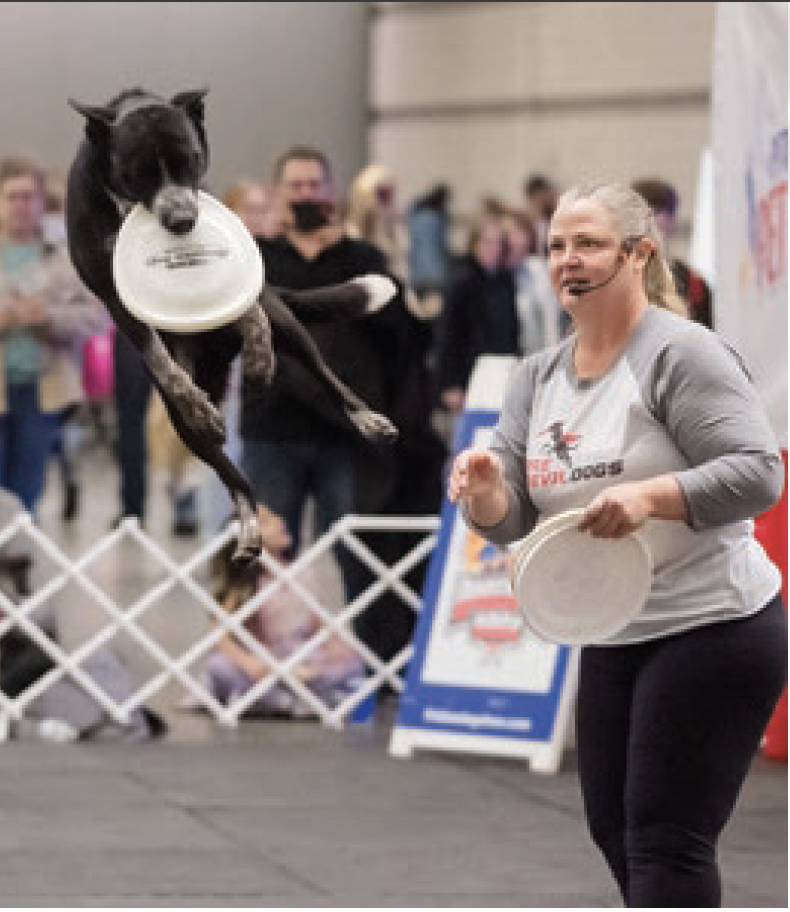
Pittsburgh Pet Expo
Excitement, barking, and the sight of lots of people all greeted my senses at the same time when I walked into the Pittsburgh Pet Expo located at the David Lawrence Conference Hall on
the evening of Nov 18th 2022.
The Rottweiler, commonly known as a “Rottie,” is a remarkable and robust breed, celebrated for its striking appearance and unwavering characteristics of strength, loyalty, and protective instincts. Rooted in a history that traces back to the mighty Roman Empire, Rottweilers have undergone a centuries-long transformation, evolving into both versatile working dogs and cherished family companions.
Written By: The Dog Journal
Their journey spans from ancient Rome, where they were revered as Molossus dogs guarding legions, to the medieval German town of Rottweil, where they earned their name and reputation as “Rottweiler Metzgerhund” or “Rottweil Butcher’s Dog.” In today’s world, these dogs continue to captivate hearts, showcasing their intelligence, dependability, and loving nature. Rottweilers, with their rich heritage and timeless appeal, embody a breed that seamlessly bridges the gap between history and modernity, remaining a beloved presence in homes and workplaces worldwide.
The Rottweiler’s ancestry can be linked to the Molossus dogs of ancient Rome, large and powerful canines employed as guardians, herders, and protectors. These dogs, which accompanied Roman legions during their conquests, played a pivotal role in shaping the breed’s robust physique and tenacious spirit.
As the Roman Empire expanded, these Molossus dogs were introduced to the region that would later become Germany. Here, they found a new calling as they settled in the town of Rottweil. Over time, they became known as “Rottweiler Metzgerhund” or “Rottweil Butcher’s Dog.” In their new roles, they served as versatile working dogs, tasked with herding cattle, guarding livestock, and protecting their human companions.
Throughout the Middle Ages, Rottweilers continued to excel in their roles as herders and protectors. They were particularly valued by butchers and cattle merchants in Rottweil and the surrounding regions. The breed’s strength and reliability made them indispensable for driving cattle to market, and they were often entrusted with large sums of money, guarding it fiercely.
As industrialization swept through Europe in the 19th century, the Rottweiler’s role as a working dog began to decline. However, their reputation as steadfast protectors remained intact. In the late 19th and early 20th centuries, Rottweilers faced a challenging period, with their population dwindling. Still, dedicated breed enthusiasts stepped in to ensure their survival and transition from working dogs to beloved family companions.
Rottweilers were initially brought to the United States by various individuals and enthusiasts who were interested in the breed. These early imports of Rottweilers to the US began in the late 1920s, but the breed’s presence remained relatively limited until after World War II.
American servicemen stationed in Germany during and after World War II encountered Rottweilers and were impressed by their characteristics, including their loyalty, intelligence, and versatility. These servicemen played a significant role in introducing Rottweilers to the United States. Many of them brought Rottweilers back with them when returning to the US, which helped to increase the breed’s popularity in the country.
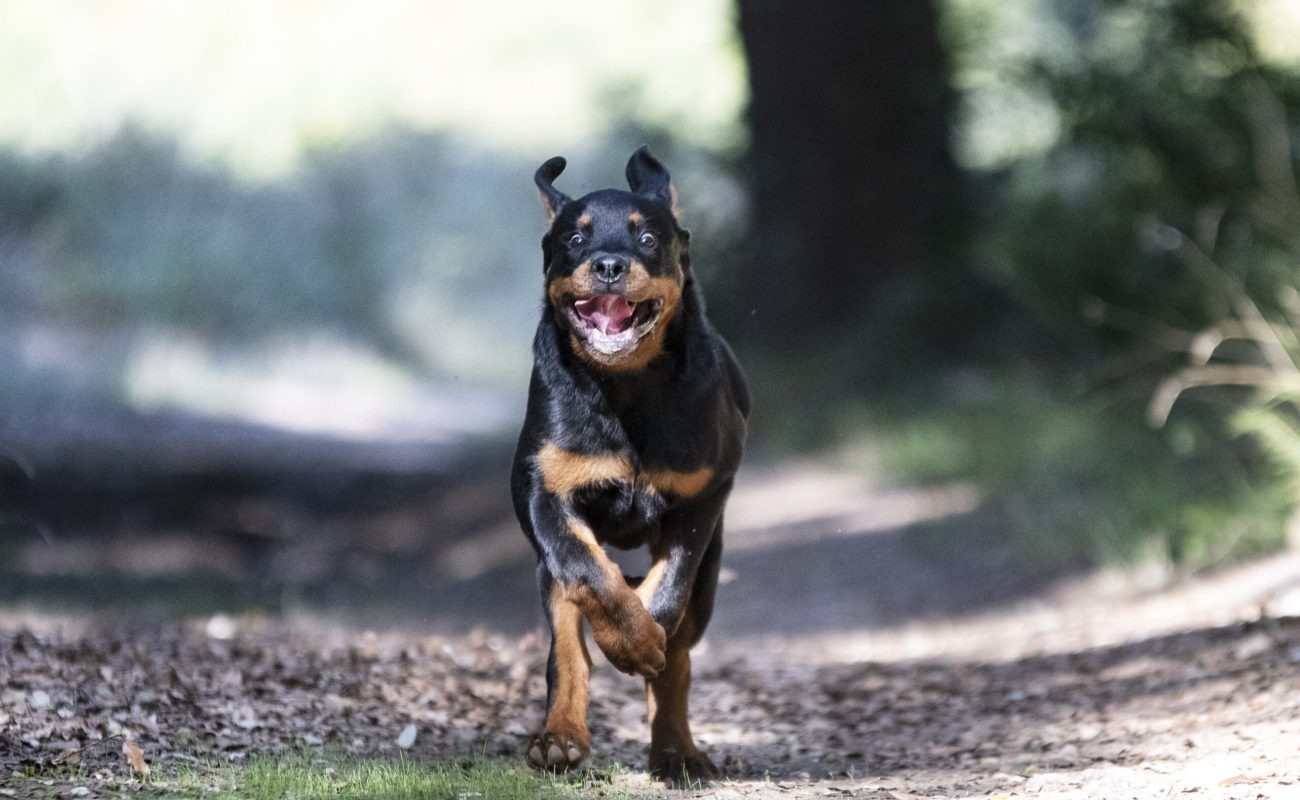
The Rottweiler’s reputation as a strong and protective yet loving companion gradually grew, and the breed found its place in American households.
In 1907, the International Rottweiler Club (IRK) was founded in Germany to promote the breed’s standard and characteristics. The IRK played a pivotal role in shaping the breed’s future. The Rottweiler’s journey to international recognition continued as it made its way to North America. The breed was officially recognized by the American Kennel Club (AKC) in 1931, opening the door for Rottweilers to participate in AKC events and dog shows. This recognition marked a significant milestone in the breed’s history, contributing to its increasing popularity in the United States and around the world.
Today, Rottweilers stand as a testament to their enduring legacy. They are not only beloved family pets but also serve as dedicated working dogs in roles such as search and rescue, police work, and as service animals. Their rich history, from their origins in the Roman Empire to their present-day recognition, showcases their remarkable journey and the deep bond that exists between these majestic dogs and their human companions.
First and foremost, Rottweilers are known for their loyalty and protective instincts. They are deeply devoted to their families and have an innate desire to safeguard their loved ones. Therefore, a lifestyle that suits them best includes a close-knit and active household. Rottweilers flourish when they are an integral part of the family unit, sharing in the daily activities and bonding with their human companions. They enjoy physical closeness and thrive on the attention and affection of their owners.
Rottweilers are robust dogs with ample energy to spare. Regular exercise is a fundamental component of their lifestyle. A Rottweiler requires daily physical activity, such as brisk walks, play sessions, and mental stimulation through obedience training or dog sports. A lifestyle that includes opportunities for exercise not only keeps them physically fit but also helps to channel their energy positively. An ideal home for a Rottweiler might include access to a secure yard where they can run and play freely.
Socialization is another crucial aspect of a Rottweiler’s lifestyle. These dogs have a protective nature, and early exposure to various environments, people, and other animals is essential to ensure they remain well behaved and comfortable in different situations. Regular socialization helps prevent excessive shyness or aggression and allows them to develop into well-rounded pets.
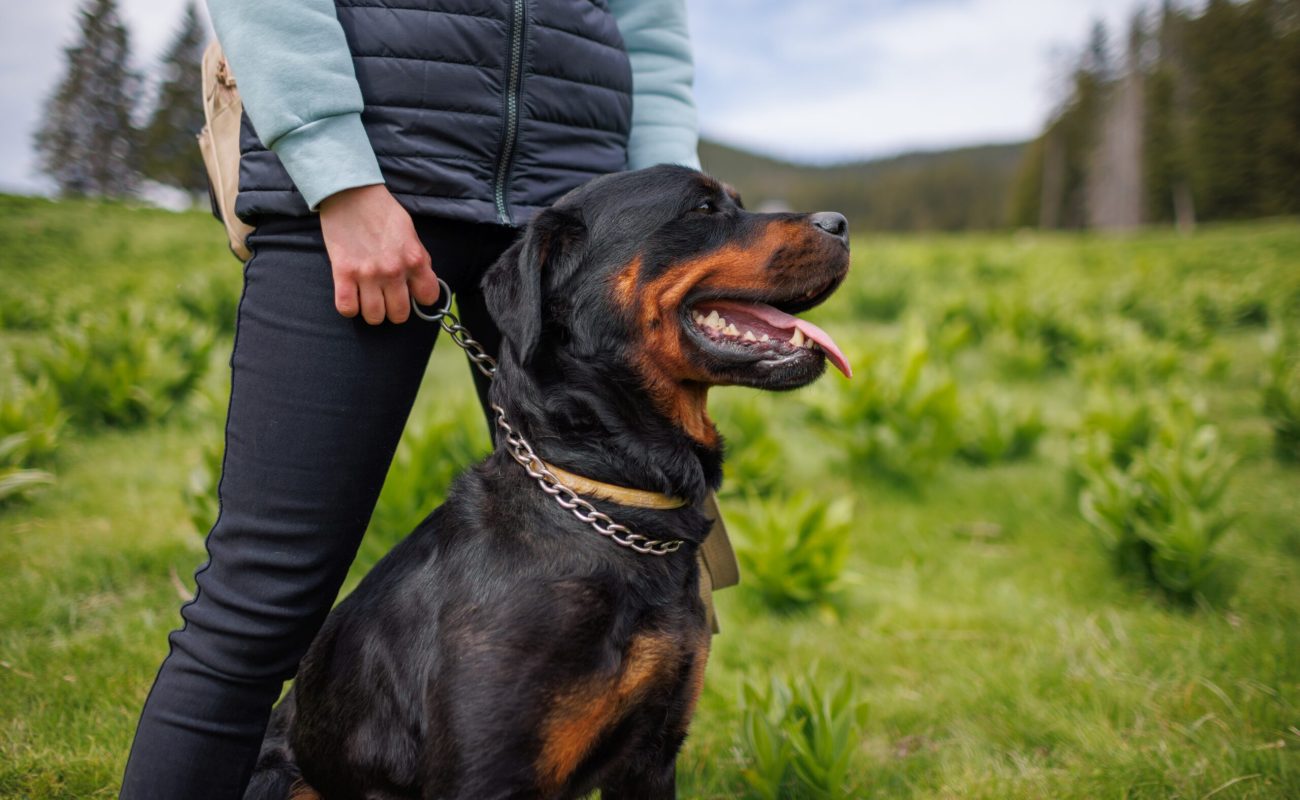
Furthermore, a Rottweiler’s lifestyle should incorporate mental challenges. These dogs are highly intelligent and thrive on tasks that engage their minds. Obedience training, puzzle toys, and interactive games provide mental stimulation and prevent boredom, contributing to a well rounded and contented Rottweiler.
In terms of living arrangements, Rottweilers are adaptable but thrive best in spacious environments where they have room to move around comfortably. Adequate space allows them to stretch their legs and explore their surroundings.
Lastly, a loving and responsible owner plays a pivotal role in a Rottweiler’s lifestyle. Consistent training, proper healthcare, and a strong bond built on trust and respect are essential. Responsible ownership includes providing a balanced diet, regular veterinary care, and a safe and secure environment. Simply put, a lifestyle that suits Rottweilers best involves a close-knit, active family, daily exercise, socialization, mental stimulation, adequate space, and responsible ownership.
Maintaining your Rottweiler’s appearance and health doesn’t demand excessive effort, but it does require attention to key grooming needs. Rottweilers have a short, dense double coat that is relatively low-maintenance compared to some other breeds. Regular brushing, typically once or twice a week, is essential. This not only removes loose hair, dirt, and debris but also distributes natural skin oils, keeping their coat healthy and shiny. While Rottweilers generally do not require frequent baths, it’s essential to use a high-quality dog shampoo and thoroughly rinse and dry your dog after a bath to avoid skin issues.
Ear cleaning should be a part of your routine to prevent wax buildup and potential infections. Regular nail trimming is crucial to keep your Rottweiler’s nails at a comfortable length. Dental hygiene is also paramount, so brush their teeth regularly and consider dental chews or toys to maintain their oral health. Keep an eye on your Rottweiler’s skin and coat, checking for signs of irritation, dryness, or hot spots. A balanced diet and supplements like fish oil, if necessary, can contribute to a healthy coat. Be prepared for moderate shedding year-round, with heavier shedding during seasonal changes, and step up the brushing during these times to manage loose hair. For Rottweilers with facial wrinkles, ensure these areas are kept clean and dry to prevent skin issues. Remember that individual Rottweilers may have unique grooming needs influenced by factors like age, activity level, and overall health. Regular grooming not only keeps your Rottweiler looking their best but also contributes to their overall well-being by preventing skin problems and promoting a healthy coat.
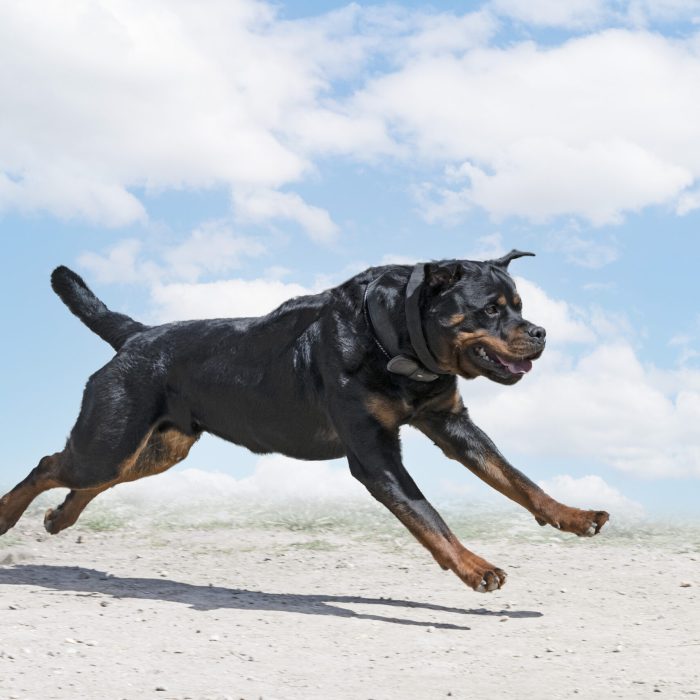
While not many Rottweilers have really become known as famous, one that has was named Butkus. Butkus was a beloved Rottweiler owned by the legendary actor Sylvester Stallone. This loyal dog played a significant role in Stallone’s life during the early stages of his career, long before he became a Hollywood icon for his portrayal of characters like Rocky Balboa and John Rambo. Stallone had moved to New York City to pursue a career in acting but was struggling to make ends meet. He faced numerous rejections and financial struggles, often unable to afford basic necessities like food and shelter. At one point, he was even homeless and had to sleep at the Port Authority Bus Terminal in New York City. He purchased the Rottweiler for only $100 from a breeder in Los Angeles. Butkus quickly became a source of inspiration and motivation for Stallone, who was going through a challenging phase in his life. The bond between the two was deep and enduring.
In fact, Butkus played an essential role in Stallone’s career breakthrough. During the early 1970s, when Stallone was facing financial difficulties and had to sell Butkus due to his inability to afford dog food, he received a small offer for the screenplay he had written for “Rocky.”
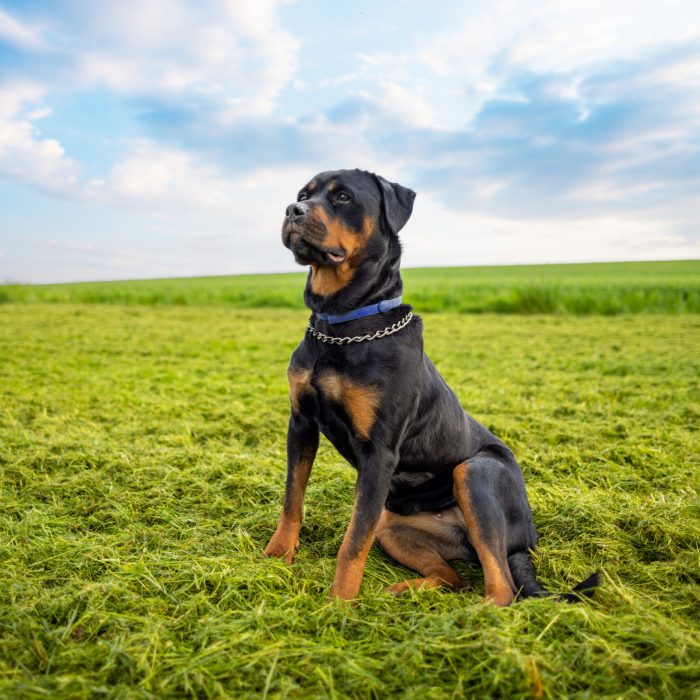
Stallone refused to sell the script unless he was also offered the lead role in the film. Eventually, he got his wish, and “Rocky” became a massive success, catapulting Stallone to stardom. Butkus remained with him throughout this journey and even made a cameo appearance in the film, adding a personal touch to the iconic character of Rocky Balboa.
Butkus symbolized loyalty, determination, and resilience, mirroring the themes of the “Rocky” series itself. Stallone often spoke fondly of his Rottweiler companion and how their shared experiences shaped his career and life. The actor’s attachment to Butkus was evident in interviews and public appearances, where he praised the breed’s affectionate and protective nature. Although Sylvester Stallone had to sell Butkus at one point due to financial struggles, he later regretted the decision and sought to reunite with his beloved Rottweiler. Fortunately, through the help of a newspaper advertisement, Stallone was able to locate Butkus and bring him back into his life, reinforcing the bond between the actor and his cherished pet.
Butkus serves as a heartwarming example of the profound connection that can develop between humans and their canine companions. His role in Sylvester Stallone’s life and in the success of the “Rocky” franchise immortalizes the special place that Rottweilers can hold in the hearts of their owners.
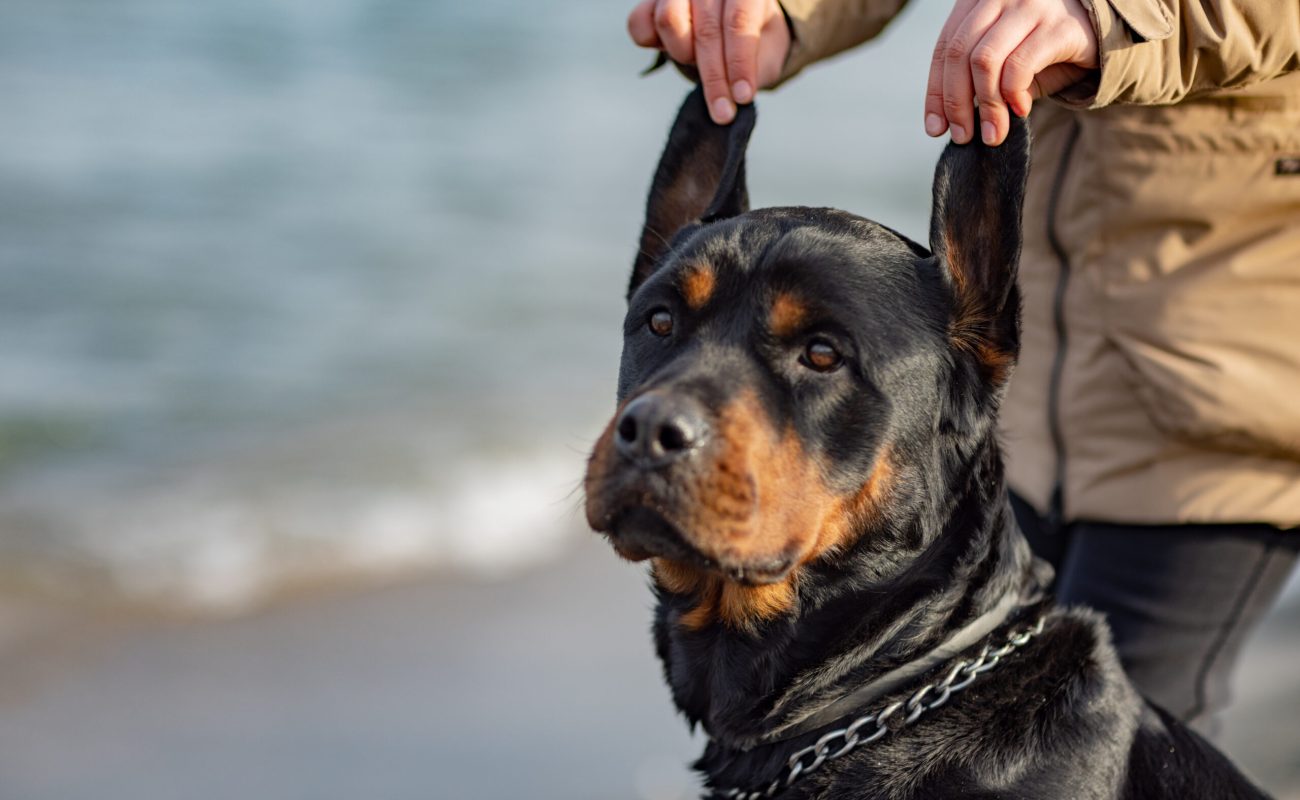
In conclusion, owning a Rottweiler is a rewarding experience that comes with responsibilities and opportunities for companionship like no other. These magnificent dogs, with their powerful presence and unwavering loyalty, can bring immense joy and fulfillment to your life. However, it’s crucial to understand the breed’s unique characteristics and needs to provide them with the best possible care and environment.
Owning a Rottweiler can be a truly enriching experience, offering love, loyalty, and an unwavering presence in your life. With the right environment and care, Rottweilers can be the devoted and wonderful companions they are known to be, making them a beloved choice for many dog enthusiasts around the world.
General Appearance: The ideal Rottweiler is a medium large, robust and powerful dog, black with clearly defined rust markings. His compact and substantial build denotes great strength, agility and endurance. Dogs are characteristically more massive throughout with larger frame and heavier bone than bitches. Bitches are distinctly feminine, but without weakness of substance or structure.
Size, Proportion, Substance: Dogs – 24 inches to 27 inches. Bitches – 22 inches to 25 inches, with preferred size being mid-range of each sex. Correct proportion is of primary importance, as long as size is within the standard’s range. The length of body, from prosternum to the rearmost projection of the rump, is slightly longer than the height of the dog at the withers, the most desirable proportion of the height to length being 9 to 10. The Rottweiler is neither coarse nor shelly. Depth of chest is approximately fifty percent (50%) of the height of the dog. His bone and muscle mass must be sufficient to balance his frame, giving a compact and very powerful appearance. Serious Faults – Lack of proportion, undersized, oversized, reversal of sex characteristics (bitchy dogs, doggy bitches).
Head: Of medium length, broad between the ears; forehead line seen in profile is moderately arched; zygomatic arch and stop well developed with strong broad upper and lower jaws. The desired ratio of backskull to muzzle is 3 to 2. Forehead is preferred dry, however some wrinkling may occur when dog is alert. Expression is noble, alert, and self-assured. Eyes of medium size, almond shaped with well fitting lids, moderately deep-set, neither protruding nor receding. The desired color is a uniform dark brown. Serious Faults – Yellow (bird of prey) eyes, eyes of different color or size, hairless eye rim. Disqualification – Entropion. Ectropion. Ears of medium size, pendant, triangular in shape; when carried alertly the ears are level with the top of the skull and appear to broaden it. Ears are to be set well apart, hanging forward with the inner edge lying tightly against the head and terminating at approximately mid-cheek. Serious Faults – Improper carriage (creased, folded or held away from cheek/head). Muzzle – Bridge is straight, broad at base with slight tapering towards tip. The end of the muzzle is broad with well developed chin. Nose is broad rather than round and always black. Lips – Always black; corners closed; inner mouth pigment is preferred dark. Serious Faults – Total lack of mouth pigment (pink mouth). Bite and Dentition – Teeth 42 in number (20 upper, 22 lower), strong, correctly placed, meeting in a scissors bite – lower incisors touching inside of upper incisors. Serious Faults – Level bite; any missing tooth. Disqualifications – Overshot, undershot (when incisors do not touch or mesh); wry mouth; two or more missing teeth.
Neck, Topline, Body: Neck: Powerful, well muscled, moderately long, slightly arched and without loose skin. Topline- The back is firm and level, extending in a straight line from behind the withers to the croup. The back remains horizontal to the ground while the dog is moving or standing. Body – The chest is roomy, broad and deep, reaching to elbow, with well pronounced forechest and well sprung, oval ribs. Back is straight and strong. Loin is short, deep and well muscled. Croup is broad, of medium length and only slightly sloping. Underline of a mature Rottweiler has a slight tuck-up. Males must have two normal testicles properly descended into the scrotum. Disqualification – Unilateral cryptorchid or cryptorchid males. Tail – The set of the tail is more important than its length. Properly set, it gives an impression of elongation of the topline; carried slightly above horizontal when the dog is excited or moving. Docked, the tail is short, close to the body leaving one or two tail vertebrae. Undocked, the tail is carried straight or upward curved and may hang at rest. Faults – Tails with kinks, strong lateral deviation, or ringtails.
Forequarters: Shoulder blade is long and well laid back. Upper arm equal in length to shoulder blade, set so elbows are well under body. Distance from withers to elbow and elbow to ground is equal. Legs are strongly developed with straight, heavy bone, not set close together. Pasterns are strong, springy and almost perpendicular to the ground. Feet are round, compact with well arched toes, turning neither in nor out. Pads are thick and hard. Nails short, strong and black. Dewclaws may be removed.
Hindquarters: Angulation of hindquarters balances that of forequarters. Upper thigh is fairly long, very broad and well muscled. Stifle joint is well turned. Lower thigh is long, broad and powerful, with extensive muscling leading into a strong hock joint. Rear pasterns are nearly perpendicular to the ground. Viewed from the rear, hind legs are straight, strong and wide enough apart to fit with a properly built body. Feet are somewhat longer than the front feet, turning neither in nor out, equally compact with well arched toes. Pads are thick and hard. Nails short, strong, and black. Dewclaws must be removed.
Coat: Outer coat is straight, coarse, dense, of medium length and lying flat. Undercoat should be present on neck and thighs, but the amount is influenced by climatic conditions. Undercoat should not show through outer coat. The coat is shortest on head, ears and legs, longest on breeching. The Rottweiler is to be exhibited in the natural condition with no trimming. Fault – Wavy coat. Serious Faults – Open, excessively short, or curly coat; total lack of undercoat; any trimming that alters the length of the natural coat. Disqualification – Long coat.
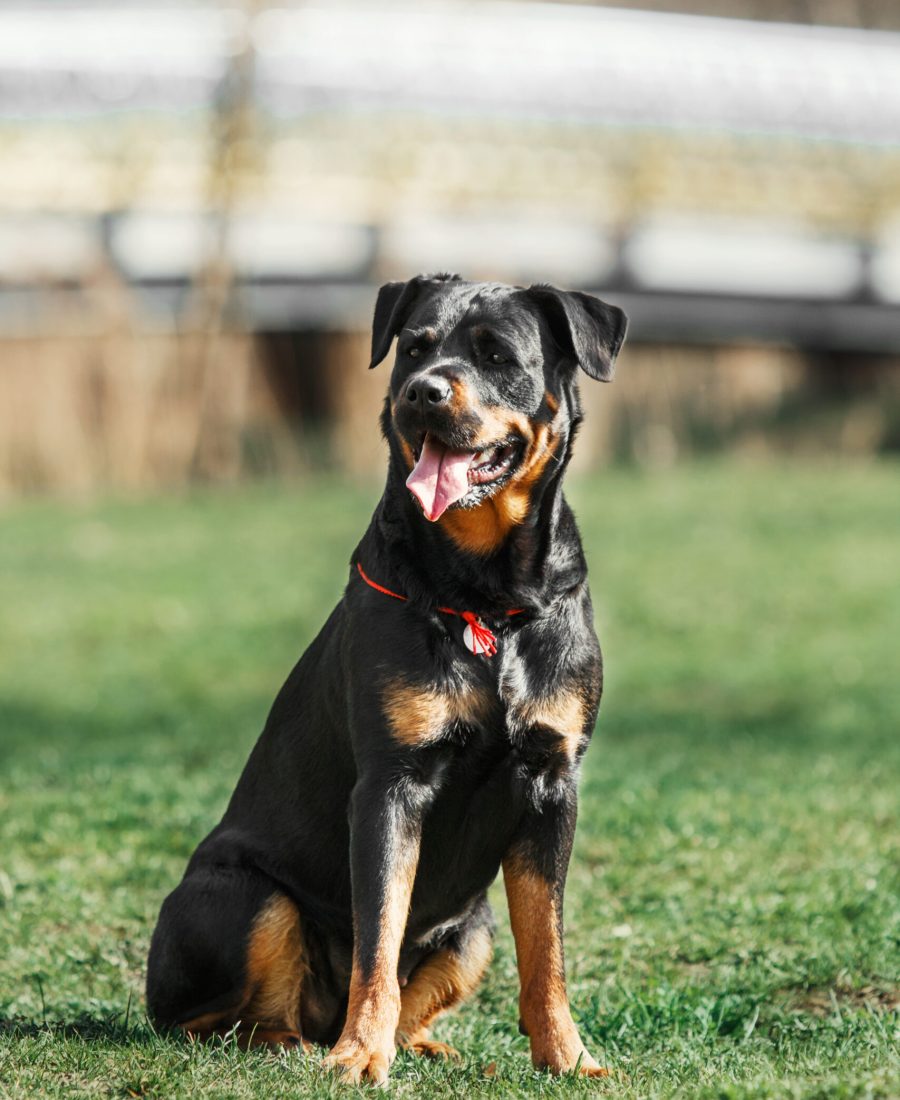
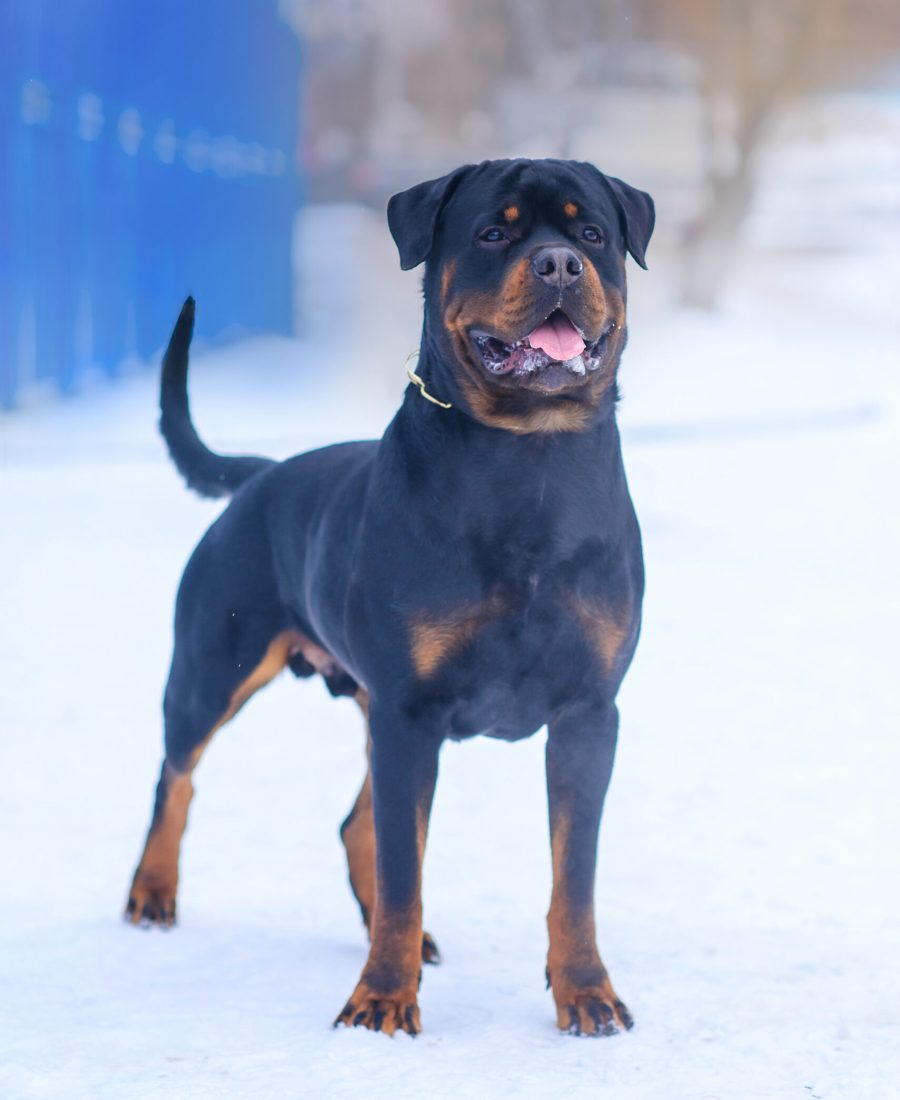
Color: Always black with rust to mahogany markings. The demarcation between black and rust is to be clearly defined. The markings should be located as follows: a spot over each eye; on cheeks; as a strip around each side of muzzle, but not on the bridge of the nose; on throat; triangular mark on both sides of prosternum; on forelegs from carpus downward to the toes; on inside of rear legs showing down the front of the stifle and broadening out to front of rear legs from hock to toes, but not completely eliminating black from rear of pasterns; under tail; black penciling on toes. The undercoat is gray, tan, or black. Quantity and location of rust markings is important and should not exceed ten percent of body color. Serious Faults – Straw-colored, excessive, insufficient or sooty markings; rust marking other than described above; white marking any place on dog (a few rust or white hairs do not constitute a marking). Disqualifications – Any base color other than black; absence of all markings.
Gait: The Rottweiler is a trotter. His movement should be balanced, harmonious, sure, powerful and unhindered, with strong forereach and a powerful rear drive. The motion is effortless, efficient, and groundcovering. Front and rear legs are thrown neither in nor out, as the imprint of hind feet should touch that of forefeet. In a trot the forequarters and hindquarters are mutually coordinated while the back remains level, firm and relatively motionless. As speed increases the legs will converge under body towards a center line.
Temperament: The Rottweiler is basically a calm, confident and courageous dog with a self assured aloofness that does not lend itself to immediate and indiscriminate friendships. A Rottweiler is self-confident and responds quietly and with a wait-and-see attitude to influences in his environment. He has an inherent desire to protect home and family, and is an intelligent dog of extreme hardness and adaptability with a strong willingness to work, making him especially suited as a companion, guardian and general all-purpose dog. The behavior of the Rottweiler in the show ring should be controlled, willing and adaptable, trained to submit to examination of mouth, testicles, etc. An aloof or reserved dog should not be penalized, as this reflects the accepted character of the breed. An aggressive or belligerent attitude towards other dogs should not be faulted. A judge shall excuse from the ring any shy Rottweiler. A dog shall be judged fundamentally shy if, refusing to stand for examination, it shrinks away from the judge. A dog that in the opinion of the judge menaces or threatens him/her, or exhibits any sign that it may not be safely approached or examined by the judge in the normal manner, shall be excused from the ring. A dog that in the opinion of the judge attacks any person in the ring shall be disqualified.
Summary: Faults – The foregoing is a description of the ideal Rottweiler. Any structural fault that detracts from the above described working dog must be penalized to the extent of the deviation.
Disqualifications: Entropion, ectropion. Overshot, undershot (when incisors do not touch or mesh); wry mouth; two or more missing teeth. Unilateral cryptorchid or cryptorchid males Long coat. Any base color other than black; absence of all markings. A dog that in the opinion of the judge attacks any person in the ring.

Excitement, barking, and the sight of lots of people all greeted my senses at the same time when I walked into the Pittsburgh Pet Expo located at the David Lawrence Conference Hall on
the evening of Nov 18th 2022.
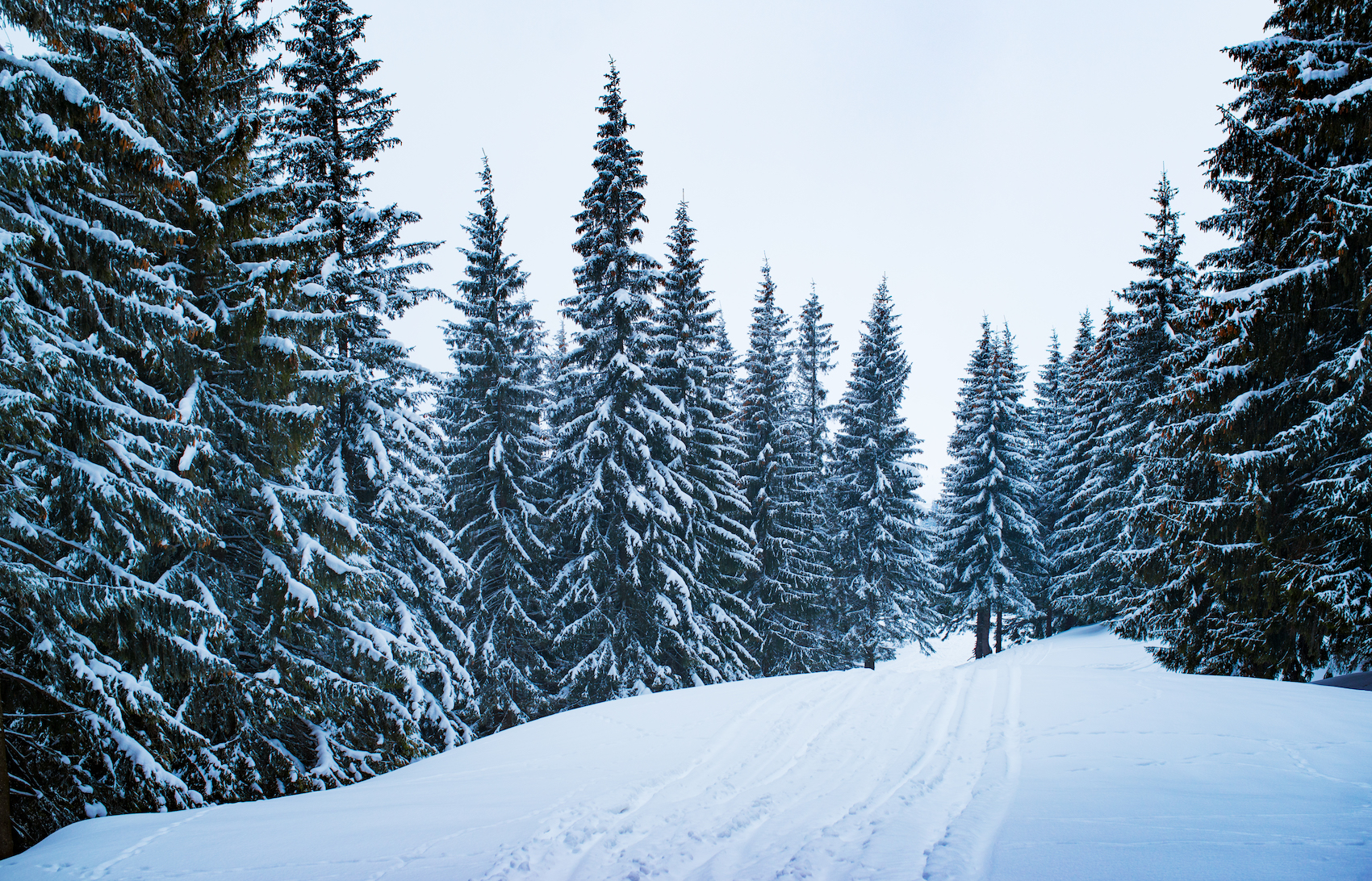
he famous Iditarod trail, which is used by the Iditarod dog sled race, runs from Anchorage to Nome, covering approximately 1,000 miles. This trail is also used for the Iron Dog Snowmachine race. I have traveled the first 300 miles of this trail rather extensively by snowmachine (snowmobile to you lower 48’ers). When I share this tidbit of information with people, they often are rather surprised, and ask something like: “You mean they actually let you drive on the race track?”

What is Early Exposure? Positive interactions with novel items and
experiences